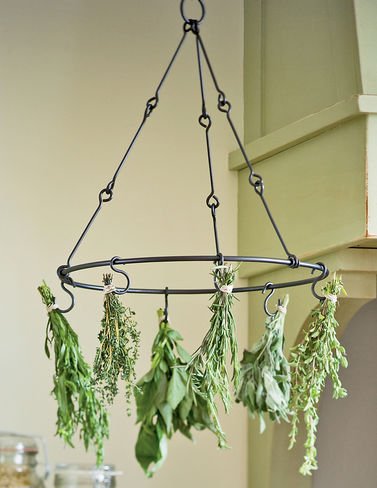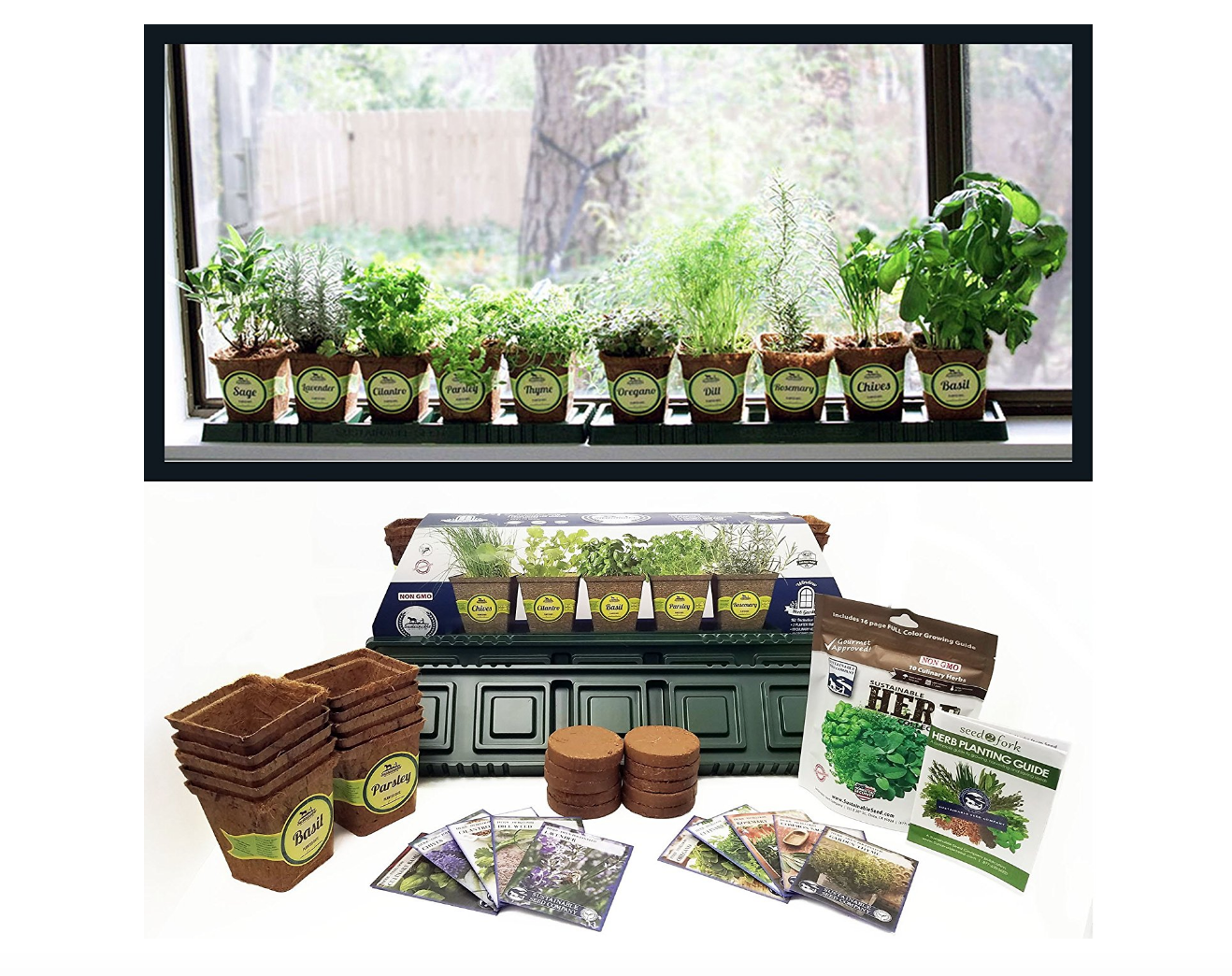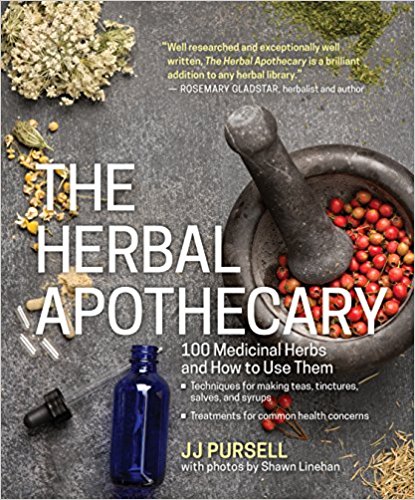10 Ways An Herb Garden Will Help You Go Zero Waste
/I hoard several things: bath products, vintage things, and herbs. I am basically your grandmother if your nana wore crop tops in public.
I’ve kept an herb garden in one form or another since my mom gave me a basil plant when I was 22, way before I had a concept of zero waste or slow living. This basil plant was amazing. I had cups and cups of pesto all summer. Though it was potted, this plant grew so large it blocked the stairs to my second story apartment. My roommate almost threatened that it was "me or the plant".
I tasted herb success and was hooked on gardening. Regular basil led to lemon basil (still my favorite), purple ruffled basil, African blue basil, Thai basil, cinnamon basil, giant Neapolitan basil, and holy basil.
Basil: the gateway drug of gardening. Who knew.
Fast-forward to today, and my garden hoarding now includes (usually multiples) for the following herb plants: pineapple sage, thyme, lemon thyme, fennel, red sorrel, sheep’s sorrel, parsley, rosemary, sage, oregano, marjoram, tarragon, lavender, chives, basil, purple basil, thai basil, pineapple mint, lemon balm, catnip, and spearmint. I wasn't kidding about the herb hoarding, y'all.
They are my plant babies, and I love them so. Herbs are beautiful, practical, delicious, and both fragrant and relaxing.
What I didn’t expect, however, was how handy keeping herbs on hand would become during this journey of mine to living a greener life. (I cannot in good conscience describe my lifestyle as zero waste, but I’m working on it. I think it’s important for most of us to think of zero waste as a goal, so as not to get discouraged.)
10 Ways An Herb Garden Will Help You Go Zero Waste
Cooking
Unless you live somewhere that abounds with bulk spice stores - and I’m betting most places in the US don’t qualify - finding a zero waste spice source can be tricky and take a lot of effort. I love to cook, and I make the trek to get my spices at Charleston Spice and Tea Exchange, but when you have an herb garden literally several steps away that basically cost you nothing more than the start up plants (most of mine are perennials, and I tend to let the herb beds reseed themselves), you find cooking with herbs is fun, easy, cheap, and involves no packaging. Are fresh herbs always a good substitute for spices in a given recipe? No, but you’ll be surprised how often you can sub things out and play in the kitchen.
Check out Alicia Pope's Savory Watermelon Salad or my Summer Veggie Stuffed Bell Peppers to get your feet wet.
I like to keep groups of herbs on hand that will play well together in the kitchen, like rosemary, parsley, sage, and lemon thyme. Basil, oregano, and marjoram are another favorite combination.
*This post contains affiliate links, meaning if you buy these products, I get a tiny monetary high five for spreading the good word about fun products at no cost to you.
Crafting
I’m a sucker for a good craft! And it’s always so lovely when you have things on hand that don’t come enshrined in plastic so you can scratch that creative itch without feeling guilty about the trash. While I’m big on herb wreaths and using drying herbs for decorative purposes, remember that you can easily incorporate herbs in handmade paper (check out this DIY tutorial on handmade paper from Salvage & Stitch). I’ve also been playing with the idea of using my purple fennel or red sorrel stems (which pack a brilliant deep red pigment) for my next round of DIY vegetable-based watercolor paints.
Tea
Buying zero waste teas at the bulk spice store is basically like The Rock sucker punching you in the wallet. OH MY GOD. Then I did a little reading and realized a lot of what I have in the garden actually makes a wonderful tea. I’m still playing around with different recipes, but if you’re growing pineapple sage, mint, sage, lemon balm or lemongrass, you’re going to love playing around with making your own teas. Many conventional triangular shaped teabags are actually made from a synthetic mesh, but even the paper ones use between 50cm-70cm of paper per bag, and its estimated “tea drinkers in Britain alone throw out 370,000 tons of tea bags and tea leaves each year”, so don’t underestimate either the convenience or impact of making your own tea from garden fresh herbs. I use mine fresh and toss them in an infuser!
Cleaning
We culturally associate fresh scents with cleanliness, and a plain vinegar cleaner leaves a little to be desired in the fragrance department, in my opinion. While citrus peels can be used for a variety of lovely kinds of scented vinegar, I don’t usually have citrus peels kicking around right as I’m in need of making my next round of vinegar. Timing is everything, right? I love rosemary, mixed herbs, and fennel in my cleaning solutions, and using bulk vinegar and scrap fabric for your cleaning routine (or reusable, washable sponges) generates way less trash than most spray bottles and paper towels or packets of Lysol wipes.
Beauty
As mentioned like, a million times in this blog, I’m sort of a trash fire of a woman when it comes to my beauty routine. I’m just not all that interested. But since I’m definitely in the minority on that one, I’ll mention that you can find DIYs for herbal lip balms, bath salts, body butters, and hair rinses all over Pinterest. Lavender, sage, mint, and camomile dominate this area.
Floral Arrangements
This is one of my absolute favorite ways to play with herbs in my house, especially when one of them is going nuts and needs a solid pruning. If you’re also growing flowers, awesome! Snip off some of the not-quite-there blooms and arrange them next to some thyme, rosemary, or pineapple sage… or purple basil for extra color. The smell is amazing! If you’re buying flowers at the store, consider only buying one sleeve of blooms and filling in with fragrant herbs from the garden. (They smell even better than the flowers, 99% of the time!)
These are flowers from my bee garden with variegated pineapple mint and flowering oregano.
Home Scents
Some of y’all may remember that I got all worked up about artificial plugins and air fresheners. They’re disgusting, frankly, but they’re also incredibly toxic, wasteful, and not recyclable. And that’s where the simmer pot comes in! I love a good simmer pot, and when I’m running low on spices, it’s hard to beat a pot of herbs in a simmer pot with some lemon.
Gift Wrapping
Between holidays, birthdays, and baby showers, it seems there’s constantly a gift-giving occasion on the horizon. I love the look of a simple, sophisticated package tied up with some twine and a sprig of herb from the garden. Given that most wrapping elements are tossed in the garbage immediately after the gift-giving occasion, this is an awesome opportunity to save yourself money, a trip to the store, and work on seeing the world through a zero waste lens. Pictured here are oregano flowers, but thyme, sage, and rosemary are great for this. Flowering lavender is also amazing. If you're worried the herbs will wilt before the gift-giving occasion, toss them in the dehydrator or oven on low... or this herb drying rack I'm lusting after.
Medicinal
This is not an area I have delved into yet, other than fresh aloe for sunburns, but the internet abounds with information about what herbs are good for helping treat various ailments from digestive upset to insomnia. Check out this post here on medicinal uses for herbs or this one for a lovely herbal healing salve recipe.
Complementary Planting
Anyone who has battled aphids in an organic garden probably already knows they’re not a huge fan of mint… or cilantro, at least in my garden. I’ve also been playing with marigolds around some of my hardest-to-keep-alive vegetables, and it’s worked WONDERS. If you’re plagued by aphids (me, every single winter), flea beetles (also me, this summer), or other undesirables, remember to get on that Google for complementary herb plants before you reach for that spray bottle.
Not only is it the healthier way to repel pests for you and your pets, but you also won't need to spend lots of money on holistic fixes. You'll also be able to dodge all the plastic bags and spray bottles that are a constant thorn in every eco-friendly gardener's side.
Finally, you may remember that many an herb made my 15 Edibles You Basically Cannot Kill list, so don’t be afraid to jump in there and try out some herbs at are a little out of your comfort zone. The beautiful thing about trying to go zero waste is that it forces you to think creatively, and you’ll find ways to use them!
Looking to maximize your garden? This post from Green Global Travel is thorough, very well thought out, and creative. You’ll want to give it a read. If I had stumbled across this post 6 years ago, when I started going into urban farming mode, it would have saved me many a headache! (Though maybe the fun is in the learning process for me, who knows.)
10 Ways An Herb Garden Will Help You Go Zero Waste












